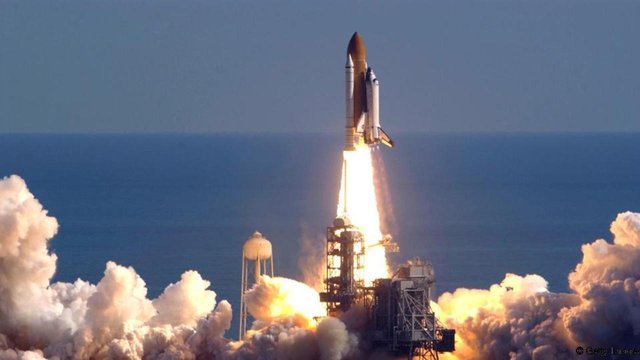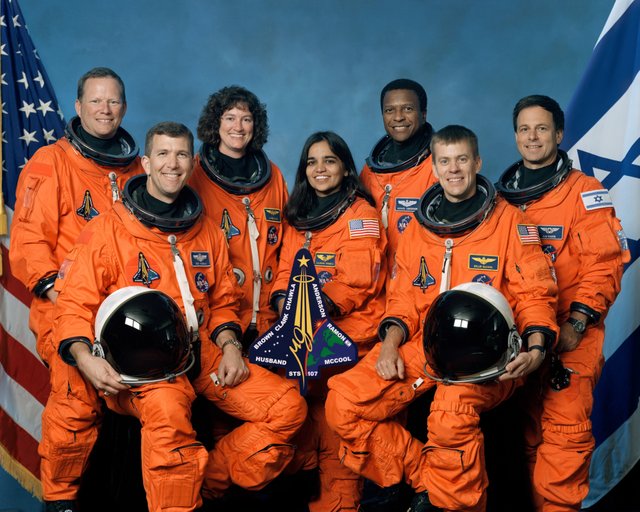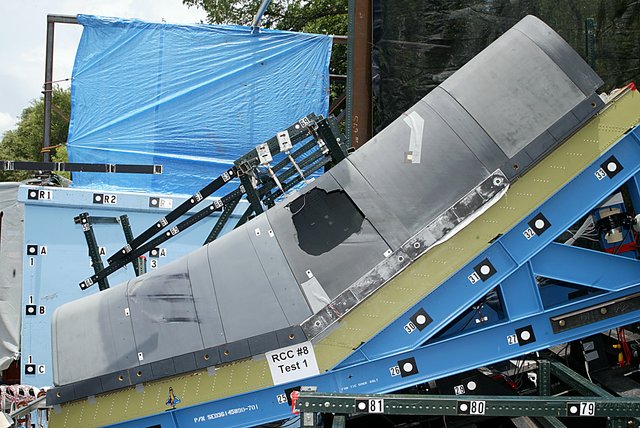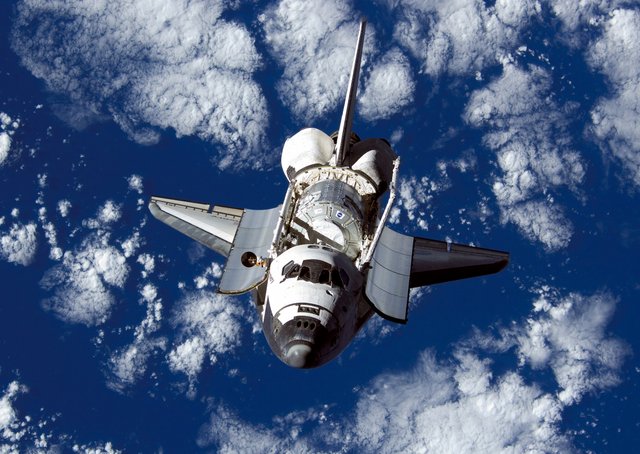NASA Disasters Re-examined: Part III
The 50th anniversary of the Apollo 1 fire was just a few days ago. With this disaster back in the news, I decided a three part series on some of NASA's most infamous disasters could be timely. While almost everyone has heard of these events, there's more to the story than just what gets in the news. Going back over these tragedies is important. There is a lot to learn from our failures, and no one would want mistakes repeated. I do my best to keep the lessons learned from these events in mind as I do my own engineering work. While I don't get to work on spaceships, I want to avoid mistakes in my own work.

Part I focused on the Apollo 1 fire and Part II on the Challenger disaster. For the final part, we'll take a look at another of the space shuttles. In March of 1979, the Columbia orbiter was delivered to the Kennedy Space Center. Columbia was to be the first shuttle in NASA's new Space Transportation System (STS). The launch was delayed for some time, however, by issues with the space shuttle main engines (SSME's) and the thermal protection system (more on this in a minute). On April 12, 1981 Columbia was launched in to space, ushering in the era of reusable spacecraft. For the next 20+ years, the Columbia and her crew would fly a variety of missions, assisting scientific research in space. Columbia's original namesake was a 1792 oceangoing ship that explored the mouth of the Columbia river and was also the first American vessel to circumnavigate the globe[1].
On January 16, 2003, Columbia launched from Cape Canaveral on mission designation STS-107. This would be the Columbia's 28th mission. The goal of the mission was to carry out microgravity and Earth sciences research. Seven astronauts were on board: commander Rick D. Husband, pilot William C. McCool, mission specialists David M. Brown, Kalpana Chawla, Michael P. Anderson, Laurel B. Clark and payload specialist Ilan Ramon. For everyone on the crew this would either be their first or second trip to space[2].

Crew photo before the ill-fated 28th Columbia mission. The Israeli flag is for Ilan Ramon (IAF).
Although they didn't know it, the entire crew was doomed from the moment the Columbia took off. The space shuttle's main fuel tank was insulated with foam to prevent ice build up. Ice failing off the main tank could damage the shuttle during take off. Tragically, a piece of this foam fell off and caused the exact damage it was meant to protect against. An approximately briefcase sized chunk of the foam impacted the Columbia's left wing on takeoff. This created a hole estimated to be 15 - 25 cm on the wings heat shielding[3].
The space shuttle used reinforced carbon-carbon (RCC) material on the nose cone and leading edges. RCC is a composite material that consists of a graphite matrix reinforced with carbon fibers [4]. RCC is an incredibly expensive to produce. One square foot would cost NASA over $10,000[5]! This expensive solution is needed because temperatures during reentry can reach a blistering 1650 C (3000 F). While these panels have great insulation properties, they are also brittle. They have to be individually mounted on the shuttle to allow for thermal expansion of the aluminum frame. Otherwise, the panels would crack just from the wing flexing and expanding during flight. Due to their fragile nature, even a chunk of falling foam would be enough to damage an RCC panel[6].
The vulnerability of RCC panels to impact illustrates a key distinction in materials. Strength and toughness are two separate material properties. In general, materials are good at either being tough or strong, but not both. A ceramic knife is a strong material. It can cut though many things without losing its sharpness. Drop it the wrong way, however, and it shatters. Rubber is the opposite. You can throw a piece of rubber against a wall as hard as you want and nothing will happen. However, rubber is not strong and yields easily when you stretch or bend it. In order to survive the extreme heat of reentry, NASA engineers were forced to use a material that was exceedingly strong, but not tough.

Result of impact testing on RCC panel 8.
On February 3, 2003 the Columbia broke apart during reentry. The entire crew perished. This tragedy shocked the entire nation. I personally remember watching the news coverage of the event. As a young boy fascinated by space, I followed the resulting investigation closely. Pieces of debris were found scattered across eastern Texas, Louisiana and Arkansas. To date, only about 40% of the craft has been recovered.
If you've read the first two parts in the series, you won't be surprised about the events leading up to the disaster. Individuals within NASA were aware of the potential for insulation to strike the shuttle. Four prior missions had shown foam falling off the fuel tank[7]. Because none of these incidents caused damage to the shuttle, NASA did not regard the foam falling off with the proper level of concern. There was even a video of foam causing a dent in the booster from the previous mission! NASA also overestimated the strength of the RCC material. They incorrectly believed the only threat was from falling ice and that the foam would not impart enough energy to damage the RCC panels.

Taking a space walk to repair the panel was not a possibility for the Columbia crew. (Discovery shown above).
Due to new cameras set up during the launch, engineers reviewing the footage actually noticed the impact. Unfortunately, there was no way for the astronauts on board to repair any damage. In fact, NASA management decided not to even bother with taking higher resolution images while Columbia was in orbit. Due to their unfounded confidence in the RCC material, they did not want to waste the time and resources to inspect Columbia for a problem that could not even be fixed. That meant that the crew carried out their mission, unaware that they would be unable to return to Earth. The only mention to the crew of the foam strike was in a short email from mission control:
There is one item that I would like to make you aware of...to make sure that you are not surprised by it in a question from a reporter...photo analysis shows that some debris from the area of the -Y ET Bipod Attach Point came loose and subsequently impacted the orbiter left wing, in the area of transition from Chine to Main Wing...Experts have reviewed the high speed photography and there is no concern for RCC or tile damage. We have seen this same phenomenon on several other flights and there is absolutely no concern for entry.[8]
Rick's humorous response, "I saw the word Chine below and thought it was "China". I guess it's believeable that you might meet someone from China by the name of Main Wing :)" shows that no one involved understood the severity of the situation[9]. In a way, I guess it's better that the astronauts did not know.
Similar to the Challenger disaster, after Columbia was lost, the remaining three shuttle were grounded for three years. NASA made changes to how the foam was applied and created in orbit repair procedures. Other smaller safety changes were made as well. The space shuttles would fly again for a few more years, but these disasters contributed to the program's end in 2011. For now, at least, NASA must rely on other countries and private companies to reach space. Common themes tie all of these disasters together: complacency due to past results, disregard for engineers voicing concerns and prioritizing results over delays for safety. Hopefully, our future space endeavors learn from these tragedies.
Image sources: 1 2 3 4
I was surprised by the large positive response this series received. I guess I'll continue to write about aerospace topics in the future. Aerospace has always been a passion for me, especially in the field of materials science. If you have any specific topics or questions for me about materials, let me know with a comment!
Very interesting, thank you for shareing !!!